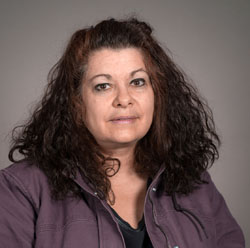Course Overview
Interested in design? Engineering? Art or science? The Industrial Design course is a hands-on summer program for high school students. It explores the potential of design not only in objects and spaces but in thinking, methodology, and ways of seeing. As students form a philosophical foundation from which to design, they will investigate not only the “how?” but also the “why?” of the discipline. Through hands on making and experimentation, students approach projects conceptually, considering the goal of the project as well as the “peripheral” outcomes – constantly putting their work in the context of the world. Physical prototyping and building are supplemented by group discussions and explorations of contemporary trends and concepts within the design world. Students analyze examples from the marketplace and work through guided investigations of their design and manufacturing processes. These precedents help guide the students’ own design development as they work toward the realization of new product prototypes, transforming from consumers into future designers.
Working closely with their professor, students are guided through a design development practice typical of contemporary design studios. Ideation, development, and prototyping are introduced as steps in a cyclical, iterative process. In the ideation phase, students learn to brainstorm and build upon ideas by sketching new forms and functions. They work both individually and in small groups to analyze the form and usability of their ideas, working past obvious solutions and generating the seeds of meaningful design proposals. In the development and prototyping phases, these design ideas are tested, revised, and developed, moving from sketches into models and functional prototypes. As each class comes to a close students fabricate their designs, creating working products that embody the design thinking and formal poetry they have developed during the course.
All students who successfully complete the course will receive a Certificate of Completion and have the opportunity to request a Syracuse University noncredit transcript.
Learning Objectives
Students will:
- Expand your design portfolio
- Exercise the design process
- Going from art to part
- Discover passion of design
- Learn to see and exercise high level of craft
- Envision and realize ideas
Course Information
Course Prefix and Number: SCN 095
Format: On Campus (at Syracuse University)
Eligibility: Students must be of rising high school sophomore, junior, or senior status – or a 2025 high school graduate.
Credit: Noncredit
Grading: Pass/Fail
Cost:
- Residential: $4,295
- Commuter: $3,318
Program rates are subject to change and will be approved by the board of trustees. Discounts and scholarships are also available.
Program Information
Summer College – On Campus: Experience what college is really like: take a college-level course, live in a residence hall, have meals with friends in a dining hall, and participate in activities and events on campus.
Course Dates and Details
| Program | Course Dates | Class Time (Eastern Time) | Credit/Noncredit |
|---|---|---|---|
| Summer College – On Campus | 2- Week Session I: Sunday, July 6 – Friday, July 18, 2025 | MTWThF 9 a.m. – 4 p.m. | Noncredit |
To see if this course is ‘open,’ refer to the full course catalog.
Course Requirements
Required Supplies
Students should budget for purchasing a supply kit, additional details coming soon!
Typical Day
Tentative Schedule
Students must report to class Monday through Friday, 9 a.m. – 4 p.m. ET.
When class is over, and on weekends, students can look forward to various Summer College – On Campus activities to meet and connect with other students! Check out our On Campus Experience page for more information!
Faculty Bios
Carmel Nicoletti

Carmel Nicoletti has been teaching art and design for over 20 years. Her teaching has included courses in design, typography, glass, sculpture, drawing, color, and the history of art. She has an MFA degrees in visual arts and education. Nicoletti’s work has been shown in galleries across the United States and in public installations. “My teaching style emphasizes the flow of one idea to another. I see each student as having a path towards both professional and personal development. My job as a professor is to help in the discovery of this pathway; leading a student to find connections between percept and concept.”
